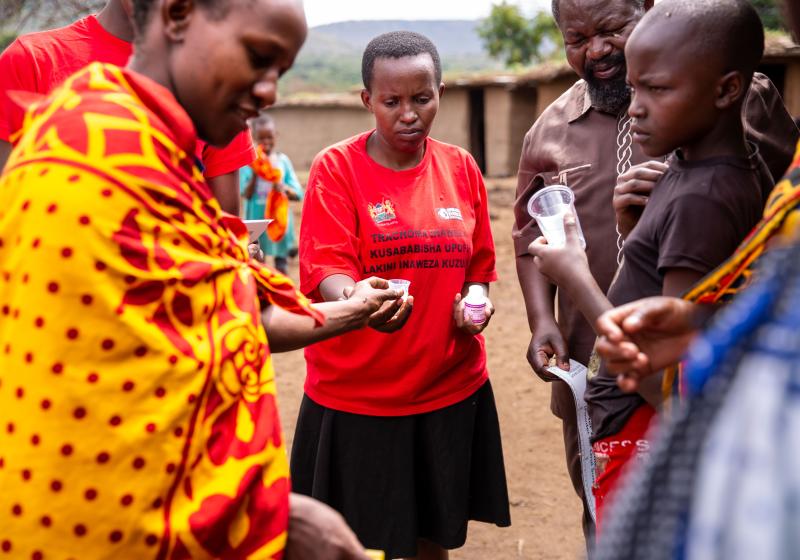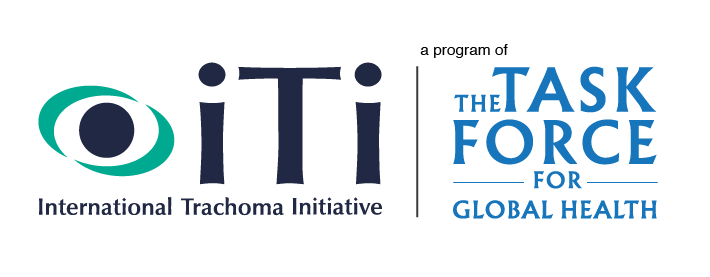
Health Workers and Trachoma: Celebrating the Heroes of Public Health
Trachoma disproportionately affects vulnerable communities around the globe, with women and children at the most risk. Health workers, from ophthalmologists to case finders, are essential in the efforts against this preventable blinding disease. Many of these frontline health workers are women, who are uniquely positioned to access and serve affected areas. The World Health Organization has set a target to eliminate trachoma as a public health problem by 2030. This goal is within reach, thanks to the dedication and expertise of public health workers across countries.
In recognition of National Public Health Week and World Health Workers Week, the International Trachoma Initiative is recognizing the invaluable contributions of health workers worldwide. Their efforts in preventing, treating, and ultimately eliminating trachoma are transforming lives and communities.
Dr. Agatha Aboe’s Leadership in Trachoma Elimination
Dr. Agatha Aboe has played a key role in Ghana’s trachoma elimination journey. As a technical expert, she provided guidance to trachoma programs in endemic areas, ensuring adherence to the SAFE - Surgery, Antibiotics, Facial cleanliness, and Environmental improvement - strategy and international standards. Agatha, an ophthalmologist with a background in community health, believes in comprehensive public health strategies to eliminate trachoma.
“My passion in trachoma elimination is about saving sight and ensuring that people don’t fall into the cycle of poverty due to this avoidable blinding disease. I want to work hard to see a world free of trachoma,” Agatha shares. In 2018, Ghana became the first country in sub-Saharan Africa to eliminate trachoma - a milestone Agatha proudly played a part in. “The day that the WHO announced that Ghana had eliminated trachoma and gave us the validation letter, my heart was overjoyed. It’s a lifetime achievement, and one I look forward to supporting other countries with.”
TT Case Finders in Nigeria: Reaching the Hardest to Reach
In many communities, Trachoma Trichiasis (TT) Case Finders are crucial to locating individuals suffering from TT, which is the eye condition caused by repeated trachoma infections and eventually causes irreversible blindness. In Nigeria, Aishatu Ahmed, a TT Case Finder from Bauchi state, shares her story. “Because of my track record distributing the oral polio vaccine, I was selected to be a TT Case Finder. I became disabled when I was a child, but my disability doesn’t stop me from doing my job as a TT Case Finder.”
Aishatu goes door-to-door identifying individuals in need of TT surgery. In many cases, female case finders like Aishatu are the only ones who can access homes due to cultural and religious norms. “Being a woman is very important as a case finder because it means I can enter most homes. When I enter a home, I greet the family and explain why I’m there. Then, I check their eyes for TT. If I see someone with TT, I explain to them that surgery will help them. I tell them the place and time they can go to for surgery and that they won’t have to pay for their treatment. I also educate people about how, after surgery, they should continue to take their medication and how they can look after their personal hygiene to help keep them safe from infection in the future.”
Aishatu’s work ensures no one is left behind. “I say come, join hands, and work together to help people—they should not have to go blind. Let’s help them get surgery.”
Health Workers in Action – Pakistan’s Trachoma Elimination Success
In Pakistan, a country with significant healthcare access challenges, health workers have played a crucial role in ensuring trachoma elimination efforts reach all communities. Many people face barriers that prevent them from seeking timely treatment, often leading to severe health consequences. Recognizing this challenge, the Pakistan Trachoma Elimination Project placed a strong emphasis on engaging health workers, many of whom are women, to make eye care services more accessible, acceptable, and affordable.
Zeenat, a dedicated health worker from the Kamber-Shahdadkot district of Sindh, Pakistan, has worked tirelessly to educate communities on trachoma prevention and treatment. Operating in schools, villages, health units, and hospitals, she leads awareness sessions for both men and women, tailoring her approach to local customs and sensitivities. One of Zeenat’s most impactful contributions is her ability to connect with women, a demographic often excluded from direct healthcare engagement due to cultural restrictions. She ensures privacy while conducting health education in schools, helping to break down barriers that have historically kept women from seeking eye care.
The impact of this community-driven approach has been profound. In 2024, Pakistan officially achieved trachoma elimination as a public health problem—a testament to the power of dedicated health professionals and inclusive healthcare interventions.
Together, We Can Eliminate Trachoma
Health workers are at the heart of trachoma elimination efforts. Inclusive community-based programming must actively support and empower them in decision-making across all aspects of the SAFE strategy. The second edition of the Women and Trachoma manual supports these efforts by providing historical insights, case studies, success stories, and practical guidelines for implementing an inclusive, community-driven approach. This 2023 edition equips programs with real-world strategies to enhance service delivery, promote equitable interventions, and sustain trachoma elimination beyond 2030.
Achieving trachoma elimination by 2030 requires a collective effort. By empowering health workers regardless of gender, integrating inclusive approaches, and ensuring equitable access to care, we can turn this goal into reality. The Women and Trachoma manual serves as a vital tool in this journey because health, dignity, and opportunity should be accessible to all.

